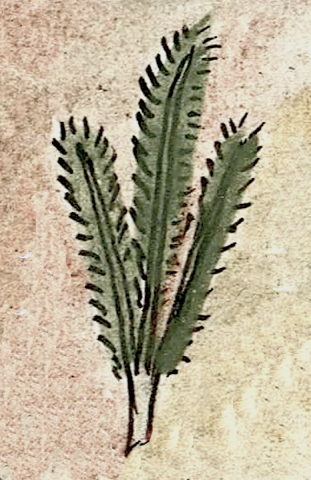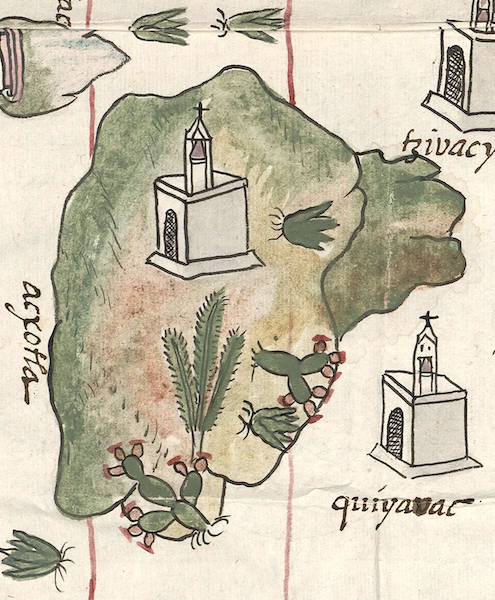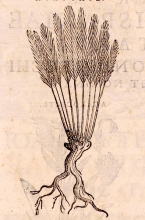acxoyatl (CmpRG)
This is element of the plant known as the (acxoyatl). It appears in a 1651 Latin edition of Dr. Francisco Hernández’s sixteenth-century natural history. It is a black-and-white woodcut in this book. The roots are forked, the trunk twisted, and the frond-like branches extending upwards with slender stems and feathery-looking foliage.
Robert Haskett
The acxoyatl (acxoyate), which seems to be related closely to the Mexican fir known as the oyametl (oyamel), is described by Dr. Hernández as having a chestnut-colored root, and compares it branches to those of the sago palm. These branches bear “minute winged leaves [are] like a pine." According to John F. Schwaller, branches from the acxoyatl were used along with other fir boughs in a ritual that occurred during the month known as Panquetzaliztli called acxoyatemaliztli. The gathered branches were arranged in a certain way, and this became “a place where individuals could place thorns that had been used for personal sacrifice and thus were covered in blood.” See Hernández, Dr. Francisco, Rerum medicarum Novae Hispaniae thesaurus, seu, Plantarum animalium mineralium Mexicanorum historia (also known as The Mexican Treasury; Rome : Vitale Mascardi, 1651), 348, https://www.loc.gov/item/2021667095/; and also Varey, Simon, ed., The Mexican Treasury: The Writings of Dr. Francisco Hernández (Stanford: Stanford University Press, 2000). John F. Schwaller gleans information about the ritual use of the branches from Sahagún’s Primeros Memoriales in The Fifteenth Month: Aztec History in the Rituals of Panquetzaliztli (Norman: University of Oklahoma Press, 2019).
For another example of a group of three acxoyatl branches, see Marc Thouvenot's vignette about acxoyatemaliztli from the Códice Matritense del Palacio Real, https://vignettes.sup-infor.com/imagen/4-PR_01_255v_c.
Robert Haskett
ACXOYATL
acxoyatl
Robert Haskett
1580
Robert Haskett
plants, las plantas, firs, los abetos, oyamel
Hernández, Dr. Francisco, Rerum medicarum Novae Hispaniae thesaurus, Library of Congress, https://www.loc.gov/item/2021667095/ -- pg. 348.

acxoya(tl), branches used in penitential offerings; fir, https://nahuatl.wired-humanities.org/content/acxoyatl
oyame(tl), a fir or pine tree that is used for coals over which to cook; the fir forests are also a home for migrating monarch butterflies, https://nahuatl.wired-humanities.org/content/oyametl
acxoyate
Stephanie Wood
Relación de Cempoala - University of Texas Libraries Collections. 1580-11-01. https://collections.lib.utexas.edu/catalog/utblac:f87917e2-e3c9-4eb2-a83...
Materials that are in the public domain (such as most of the maps in the PCL Map Collection) are not copyrighted, and no permission is needed to copy them. You may download them and use them as you wish. The image appears here courtesy of the University of Texas Libraries, The University of Texas at Austin. If you do publish anything from this database, please cite the Visual Lexicon of Aztec Hieroglyphs.




